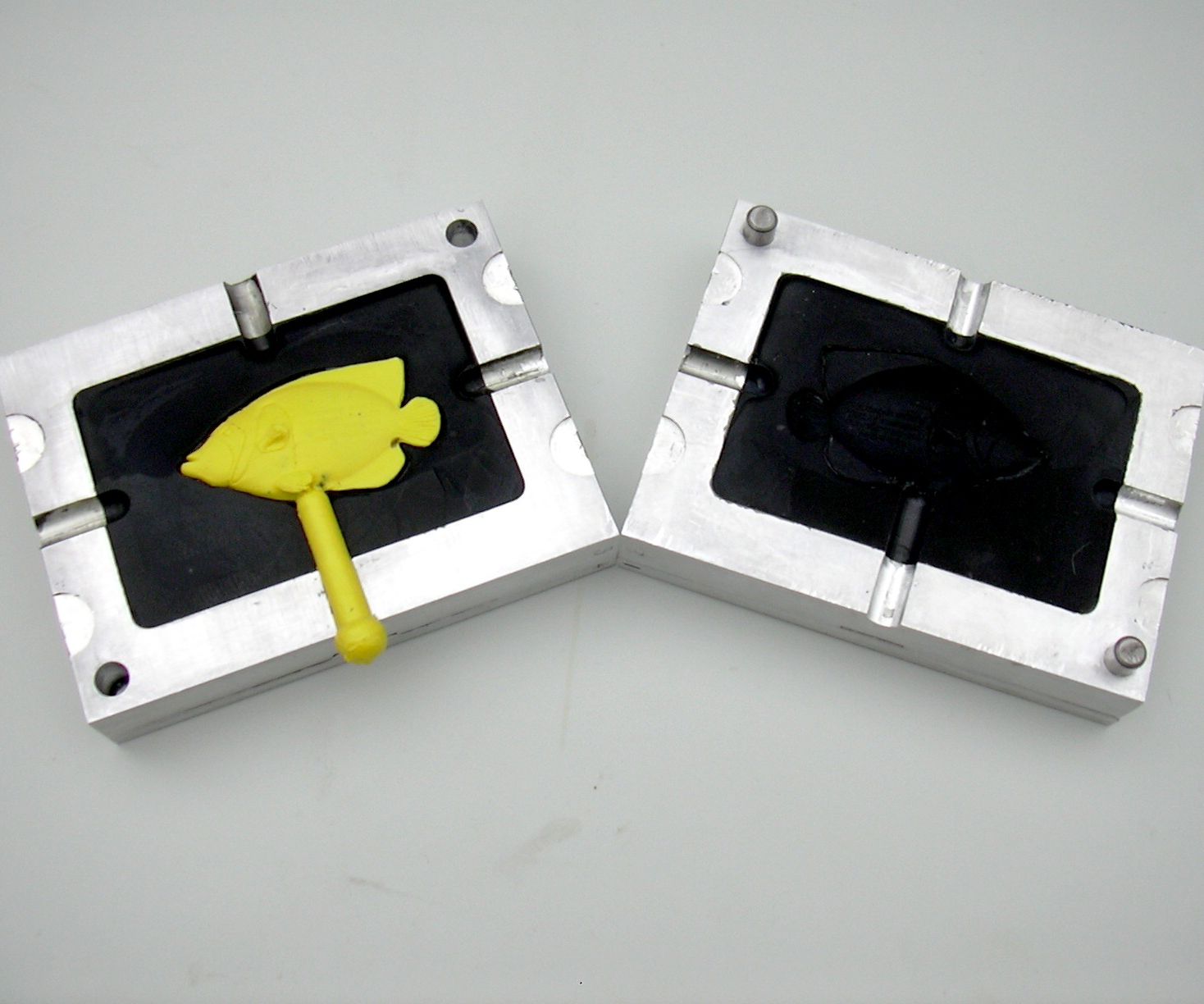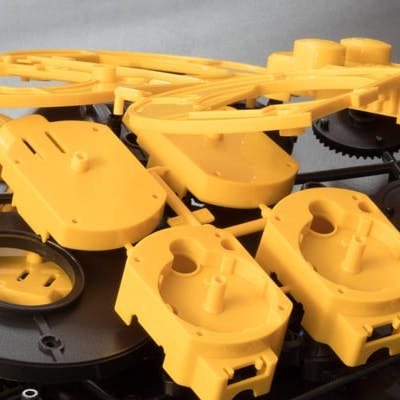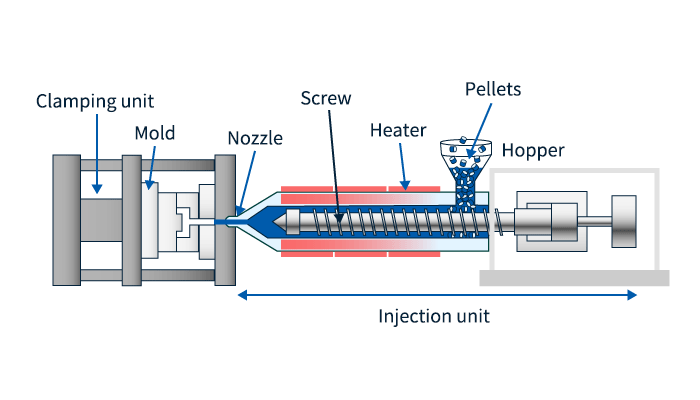Recognizing the Fundamentals of Plastic Shot Molding Processes
Plastic injection molding offers as a keystone of contemporary manufacturing, supplying a methodical strategy to creating complicated elements with precision. Exploring these crucial aspects might expose how even small modifications can lead to considerable improvements in production outcomes, raising concerns concerning the possibility for development in this established process.
What Is Plastic Injection Molding?
Plastic injection molding is an extensively made use of manufacturing process that transforms thermoplastic and thermosetting products right into precise and complicated forms. This method is preferred for its ability to produce high volumes of the same parts with extraordinary accuracy, making it an indispensable approach in different sectors, including automotive, durable goods, and clinical tools.
The process includes thawing the chosen plastic material and infusing it into a mold under high stress. The mold and mildew, created to the specifications of the desired component, enables the molten plastic to materialize as it cools down and solidifies. Once the product has actually set, the mold and mildew is opened up, and the ended up part is ejected.
Plastic injection molding offers numerous advantages, consisting of reduced waste, uniformity in manufacturing, and the capability to incorporate elaborate designs that may be challenging with various other producing techniques. In addition, it supports a broad series of products, each providing unique residential or commercial properties that can be tailored for certain applications. As markets proceed to introduce, plastic injection molding continues to be at the leading edge, enabling the advancement of advanced items that fulfill evolving customer demands.
The Shot Molding Process
The injection molding procedure is an advanced strategy that involves numerous crucial stages to create premium plastic components. Plastic pellets are fed right into a warmed barrel where they are thawed into a thick fluid. This molten plastic is then injected under high stress right into a precision-engineered mold and mildew, which forms the product into the preferred kind.
When the mold is filled, the plastic is enabled to strengthen and cool, taking the shape of the mold dental caries. Cooling time is essential, as it impacts the cycle time and the last buildings of the shaped component. After enough cooling, the mold opens, and the completed part is expelled using ejector pins.

Materials Utilized in Shot Molding
Different products can be used in the shot molding procedure, each offering one-of-a-kind homes that satisfy particular applications. One of the most commonly made use of materials include thermoplastics, thermosetting plastics, and elastomers.

Thermosetting plastics, like epoxy and phenolic resins, undergo a chemical adjustment during the curing process, leading to a stiff, stringent framework. These materials are perfect for applications needing high heat resistance and structural stability, commonly used in vehicle components and electrical insulators.
Elastomers, consisting of silicone and rubber-based materials, supply adaptability and resilience. Their one-of-a-kind buildings make them suitable for applications that demand elasticity, such as seals and gaskets.
In addition, specialized materials like bio-based plastics and composites are acquiring grip for their ecological advantages and enhanced performance characteristics, broadening the range of injection molding applications in different sectors. Recognizing the residential properties of these materials is essential for choosing the ideal kind for details projects.
Advantages of Injection Molding
Injection molding attracts attention as a highly efficient manufacturing procedure that uses numerous advantages for producing intricate get rid of precision. Among one of the most considerable benefits is the ability to create elaborate layouts that would certainly be difficult or difficult to achieve with various other approaches (Plastic Injection Molding). The procedure enables for tight resistances and thorough attributes, guaranteeing premium parts
Additionally, injection molding is recognized for its quick production capacities, making it a perfect option for high-volume manufacturing. Once the mold is developed, components can be produced promptly, decreasing lead times and raising general productivity. This efficiency not just reduces production prices yet additionally gives an one-upmanship in the market.
The convenience of materials used in shot molding additionally enhances its allure. A variety of thermoplastics and thermosetting polymers can be employed, permitting producers to pick products that ideal fulfill their particular demands, consisting of versatility, toughness, and warm resistance.
Additionally, the procedure reduces waste, as excess product can frequently be recycled and recycled. This sustainability element adds to a reduced environmental effect, making injection molding a responsible manufacturing selection. Overall, the benefits of shot molding make it a preferred method for lots of sectors.
Variables Affecting Product High Quality
While numerous aspects can influence item top quality in injection molding, understanding these aspects is important for achieving ideal results. Trick elements include material choice, processing specifications, and mold style.
Material choice plays a crucial duty, as different polymers show one-of-a-kind residential or commercial properties that impact flowability, toughness, and thermal security. Poor product option can lead to problems such as warping or incomplete filling.
Processing parameters, including temperature, cycle, and stress time, have to be carefully managed. Variants in these settings can result in disparities in part dimensions and surface area coating. For example, exceedingly high temperature levels may More hints cause degradation of the polymer, while insufficient pressure can cause brief shots.
Mold and mildew style is just as vital, as click here for more it figures out the flow of the molten plastic and the cooling procedure. Inadequately made molds might cause irregular air conditioning rates, resulting in recurring stress and anxieties and dimensional inaccuracies.

Final Thought
To conclude, plastic injection molding serves as an important manufacturing process that makes it possible for the reliable manufacturing of top quality elements. Mastery of the injection molding procedure, including the understanding of materials and the impact of numerous variables on item high quality, is necessary for attaining ideal results. The advantages of this technique, such as cost-effectiveness and design flexibility, more underscore its importance across numerous industries, solidifying its status as a preferred selection for high-volume production.
Plastic injection molding serves as a cornerstone of weblink contemporary manufacturing, giving a systematic technique to creating complex components with precision.Plastic injection molding supplies a number of advantages, including decreased waste, consistency in manufacturing, and the capability to include complex layouts that may be testing with other making techniques (Plastic Injection Molding). As sectors continue to innovate, plastic injection molding continues to be at the leading edge, enabling the development of innovative products that fulfill progressing consumer needs
The injection molding procedure is a sophisticated strategy that includes several vital stages to generate high-quality plastic components.In conclusion, plastic shot molding serves as an essential production process that makes it possible for the effective manufacturing of top notch components.